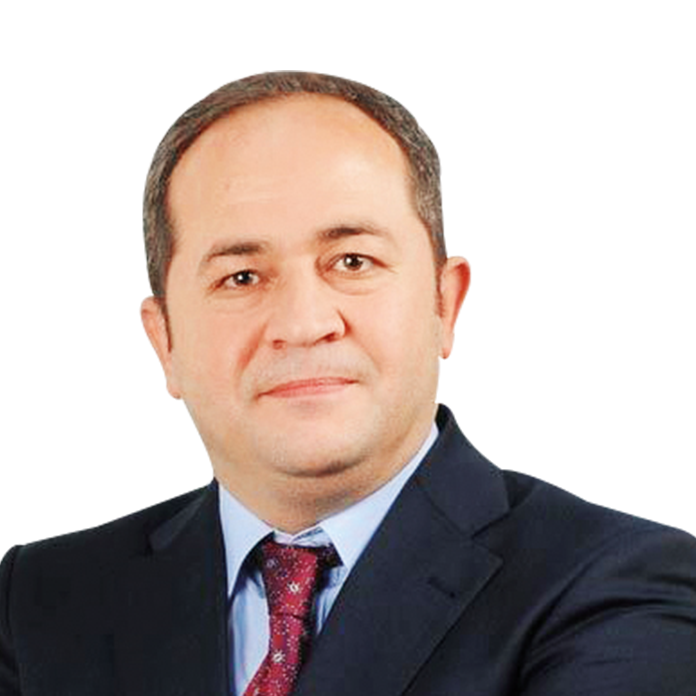The events of Oct. 6-8, 2014 and developments that followed have allowed for a general perception to develop that the PKK-HDP (Kurdistan Workers’ Party-Peoples’ Democratic Party) axis has moved away from the perspective it had held at the start of the resolution process.
Giving some thought to how this change will impact the resolution process is of vital significance. I will delve into the reasons for the change of stance, its manifestations, and its impact on the resolution process in my next article, but for now it will prove beneficial to recall the basic principles that the resolution process rests on.
The resolution process was initiated on the basis of guarantees provided by the organization and its components on two topics to the state and the public: To put an end to armed struggle and focus on a political struggle, and to forego the creation of a link between the laying down of arms and the request for autonomy, and instead link it to democratization.
The organization and its components had not reached this point via choice but because it was forced to by socio-political dynamics. It was these same socio-political dynamics that removed the resolution process from being a conjectural choice and transformed it into a strategic decision.
The first dynamic that made the resolution process viable was the organization’s discontinuation of its attempt to try and impose its demand and insistence on autonomy via the threat of resorting to weapons. The principal factor that prevented the organization from laying down arms despite the dozens of democratic reforms initiated during the rule of the AK Parti (Justice and Development Party) was the organization’s creation of a link between a resolution to the Kurdish problem and autonomy.
While the organization and its components insisted that the Kurdish issue was an ethnic one and could only be resolved by bestowing collective and administrative concessions to the Kurds, the AK Parti defended its stance that the Kurdish issue was a political problem that had arisen due to democratic deficiencies and could be solved by raising democratic standards.
This difference of opinion was the most significant factor that prevented the Democratic Initiative and the Oslo process from being successful. While it was the persistence on status that ended the Oslo process, the organization’s misinterpretation of the new regional dynamics, which were sparked by the Arab Spring, led to it intensifying its acts of terror and creating “liberated zones” aimed at creating a de facto autonomy. Toward the end of 2012, the organization saw that it couldn’t achieve the aim it had envisioned, and for which it had paid a very high price.
After paying this heavy price Abdullah Öcalan and -- through his initiative -- the organization were convinced to discontinue trying to link the laying down of arms with their request for autonomy and instead link it to the raising of democratic standards. The first dynamic, which allowed the resolution process to commence, was this guarantee given to the state and to the public.
The principal dynamic that formed the core of the process, however, was a guarantee provided by the organization that it would forego armed struggle and redirect its efforts toward a political struggle. Many factors could be mentioned that forced the organization to take such a decision. The reforms initiated by the AK Parti leadership which allowed an expansion of democratic political participation and conduits for waging a struggle need to be placed at the top of the list of these factors.
The AK Parti, via the initiatives it launched to resolve problems, substituted policies that prioritized state security with a democratic perspective, and initiated many democratic reforms within the framework of the concept of equal citizenship.
The democratic transformation carried out by the state wasn’t met by a response from the organization for a long time. While the state, with it Democratic Initiative and the Oslo process, had directed its efforts toward working the political channels, the PKK by attacking police stations and carrying out bombings in city centers continued to perform a function that hindered the will for democratization.
The organization’s insistence on armed action, while weakening the resolve shown by the AK Parti leadership to solve problems via political instruments, was also generating an effect that eroded the strength and impact of civic-political entities active in their own fields.
This anachronistic stance, just like it didn’t allow the organization to attain its goals, also undeniably led to a feeling of discontentedness among Kurds and pushed many actors engaged in politics, and who followed the organization’s line, to voice that it was time to end the armed struggle.
Finally toward the end of 2012, Öcalan promised the state and the public that he would be capable of convincing the organization to renounce armed struggle and espouse a political struggle. The resolution process commenced on the basis of this strategic decision.
The resolution process, after a long delay that came at a very high cost, became viable after these two guarantees were provided to the state and society by the organization, which adapted itself to the democratic transformation being carried out by the state and which was implemented during the AK Party’s rule.
The state took the change in the organization’s perspective regarding these two dynamics, which had created bottlenecks for the Democratic Initiative and Oslo process, as the basis for launching the resolution process.
I will take up the internal and external developments that impacted these guarantees right from when the resolution process commenced to the current day on Friday.




















